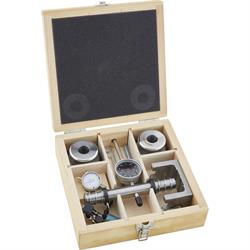What Goes in to a Speedway Differential
Just What Is Behind Our Differentials, Anyway?
Many of you, if you have had the time to peruse our website, know that we offer many various types of complete Third Member Assemblies. However, were you aware that many of those very assemblies are reclaimed, inspected, and built here in Nebraska by our own highly trained and skilled staff?
We start with reclaimed housings, clean and inspect them, and then install brand new components to achieve the desired ratio, which can be anywhere from 3.50 to 4.56 (theses are our street gears, you can see all the ratios available in our catalogs or on our website), along with either a 28 or 31 spline setup. Here is a quick overview of just exactly what we do to ensure you receive quality parts when you order from Speedway Motors.
Start with the case
As you can probably imagine, there are a lot of steps involved in turning out a quality product. You won’t see all of them here; this is just an idea of what we have to do. We start with a new or reclaimed case. They are cleaned and inspected for any potential defects. If some are found, the case is repaired, or discarded. Then, depending on the gear ratio destined for the case, we make some modifications. To allow for proper clearance on some ratios, material needs to be removed in a few places; otherwise the wheels on the bus won’t go round and round for very long.
The Internals
Then we go after the internals, using all newly manufactured parts. That’s right; the only thing that could be classified as used in this process is the case. New ring gear and pinion, new bearings, races, seals and bolts, even the pinion nut is new. We assemble the pinion shaft and all the associated bearings, races and seals, making sure that they are all torqued to the appropriate specs and corresponding pre-load.
Ready, Set, Assemble
Once that is set and ready, we assemble the ring gear and carrier. Fastened with high quality hardware, and a judicious amount of thread lock, the two should never loosen. After the bearings have been installed, it’s time to hang it in the case. Once we have it in the case, getting the backlash correct is extremely important. Through time, patience, and the proper application of shims we arrive at what is the preferred contact pattern between the ring gear and pinion.
As you can see in the photo, the pattern is mostly centered, with a small amount of clearance at both the top of the tooth and the bottom.
Then the whole unit gets a fresh coat of paint to protect all that clean metal, and then it’s ready to be shipped to you!
And now that you have read about the process a bit, why not take a look at some of the finished products? Click here to look over out selection of third member assemblies!

